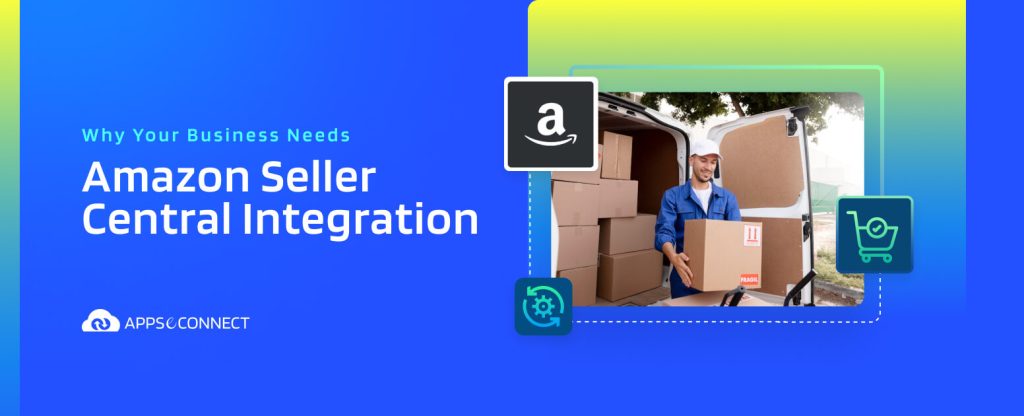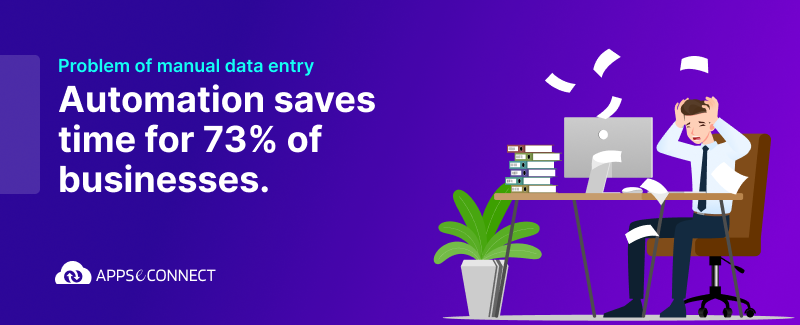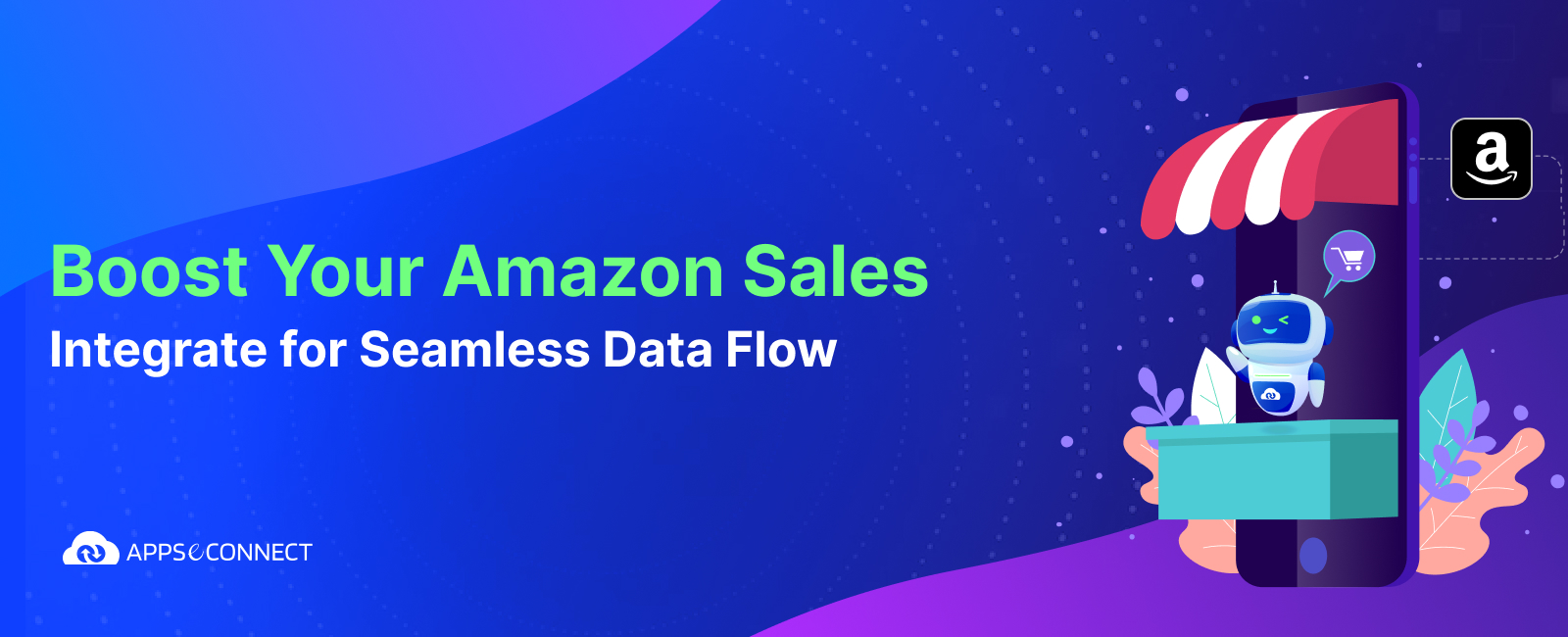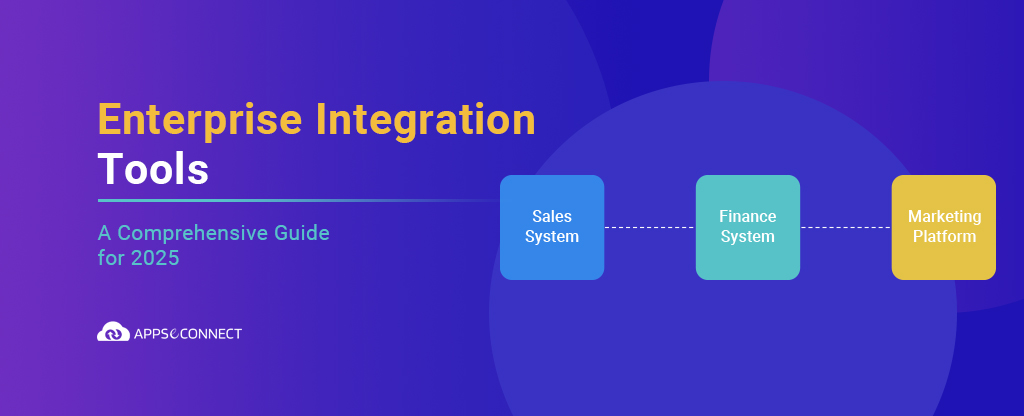When it comes to online marketplaces, there is no one as big as Amazon. With Amazon delivering to over 100 countries across the globe, every manufacturer and retailer is looking to get to the forefront of selling to the world through Amazon. The added advantage of having the logistics of the shipment getting taken care of through Fulfillment by Amazon (FBA), sellers on Amazon can focus more on operating their own company instead of managing the shipment process. However, a business cannot operate solely through a digital marketplace, but instead needs a wide range of applications to operate in sync with the webstore to manage operational processes. Processes such as updates to product details, order management, and price sync to Amazon need to be automated to create a streamlined business. Thus, arises the need for Amazon Seller Central integration to automate business workflows.
If you are running your business through Amazon Seller Central, then integrate your Amazon Seller Central with your back applications through a single platform to automate business processes and accelerate your operational productivity and efficiency!
What is Amazon Seller Central?
Before we delve deeper into what are the benefits of Amazon Seller Central Integration, let us take a look into what Amazon Seller Central is. For sellers trying to sell online, Amazon offers a web interface for brands to directly market and sell their products to Amazon customers across the globe. For the order fulfillment process, Amazon offers two options, Fulfillment by Amazon where Amazon takes care of the logistics of order delivery, and Fulfillment by Merchant where the vendor manages the fulfillment process. With access to a vast ever-growing global market and the ease of order fulfillment through Amazon, Amazon Seller Central is an excellent platform for sellers to get started with selling online.
Why You Need Amazon Seller Central Integration
Manually managing data between your business back-end applications and your Amazon store is impractical. Multiple factors come into play, such as price, item descriptions, customer details, regional compliances, and many more, while selling through Amazon, generating vast volumes of data at every step of your operations. Moreover, Amazon Seller Central is not the only thing your company will operate with and will need other line-of-business applications such as a CRM, ERP, etc., to manage your distinct business processes. Based on the number of applications that require transferring information back and forth between your Amazon webstore, the data volume and structure can become extremely complicated very quickly. The complex data reduces the readability of analytics and makes it impossible to update and ensure consistency manually across the entire software stack.
Thus, you need to have a solution that enables seamless bidirectional data flow between your software ecosystem through Amazon Seller Central integration. Integration through the Amazon Seller Central API for other enterprise software will allow your business to extract strategic information and analyze it to produce actionable insights and business intelligence. The business process automation enabled by the integration also reduces manual work hours, eliminates data silos, and removes inaccurate and redundant data from the network. The additional advantages your business can gain through data integration include:
Business insights from Big Data
With Big Data analysis, businesses can break down their unstructured data clusters into operational business intelligence. Through business intelligence, predictive analytics can be used to make data-driven decisions for operations and management. Moreover, the analytics also provides visibility into inefficiencies, gaps in process, missed revenue opportunities, and more.
Unified data across the enterprise
An integrated system allows ready access to up to date across all points of the network, which creates a centralized, uniform source of information for every team member across the organization. With unified data across the enterprise, every department gets a focused understanding of organizational goals and the objectives they must complete to achieve them.
Eliminates outdated data from databases
The changes made to data within one application getting synchronized automatically to every other application through integration helps prevent data decay by continuously updating critical data parameters such as customer details, product information, shipping data, etc.
Ensures uniform quality of data
Manually managing the accuracy of data across an entire digital ecosystem within an enterprise increases the risk of data corruption. Data integration through automation ensures that the company’s data is in compliance with its established policies and improves the accuracy and value of the information available to departments across the organization.
Thus, we can see that data integration can offer several advantages for your business. By connecting a line-of-business application such as the integration of an ERP with Amazon Seller Central, several additional benefits specific to selling on Amazon can be availed to your business.
If you are running your business through Amazon Seller Central, then integrate your Amazon Seller Central with your back applications through a single platform to automate business processes and accelerate your operational productivity and efficiency!
The Benefits of Amazon Seller Central Integration
Now that we know why your Amazon Seller Central requires data integration, let us look at the benefits you can get through an integrated Amazon Seller Central webstore. The benefits include:
Automated sync of price and inventory
With the changing volume of inventory and prices during promotions and offers, automated synchronization of price and inventory data for Amazon Seller Central through integration allows instant updates between the Amazon webstore and the back-end databases while ensuring the accuracy of the data. Moreover, any new product added to the database automatically gets updated to the storefront with accurate item descriptions.
Faster reconciliation of payments
With the vast volumes of transactions taking place through the webstore, vendors need to reconcile payments for each individual order. Furthermore, Amazon’s fee structure changes over time and geographic regions. Taking into consideration every factor while reconciling individual orders can be extremely time-consuming. Through the flexible mapping of Amazon charges to an ERP integration, merchants can automatically execute reconciliation reports within their ERP implementation that calculate the difference between actual and received payments. Any unresolved discrepancies can then be taken up with Amazon.
Geographical expansion and adherence to local regulations
The Amazon Seller Central integration allows scalability of operations to expanded geographical regions without the need for additional investments into infrastructure and resources. The integration also allows for smart automation where, whenever Amazon introduces a new fee structure or a region-specific regulation, it gets updated to the back-end ERP solution to maintain records for local regulation compliances.
Improved sales conversation
By integrating Amazon Seller Central, the collected purchasing behavior data on customers from the website is transferred to the CRM solution which enables the sales team to better target and sell to them. The curated focused approach towards selling to interested customers helps improve sales conversations while also increasing customer satisfaction.
Simplifies order tracking
When completing orders through Fulfillment by Amazon (FBA), integration can provide regular notifications on a daily or hourly basis for the delivery and any shipment updates within FBA get synchronized to the ERP to give ready detailed reports on the delivery process.
With all the benefits and streamlining brought by the integration of Amazon Seller Central, it is an indispensable tool for sellers on Amazon to accelerate their workflows and provide a best-in-class experience to their customers.
Conclusion
By leveraging Amazon Seller Central’s API to enable integration with every other implemented business application, your business can exponentially increase its profits while cutting down on the time and cost of manually managing inventory data and payment reconciliation. Moreover, you can effortlessly scale your operations without needing to further invest in physical assets. Through Amazon Seller Central integration you can achieve flexibility and faster time to market to stand out from your competitors and achieve long-term success.
Want to get started with Amazon Seller Central integration with your b but do not know the right iPaaS platform to go with? With APPSeCONNECT’s out-of-the-box intelligent low-code integration for Amazon Seller Central, now you can effortlessly deploy all the necessary integrations under a single platform and achieve true business process automation to accelerate your growth.





















